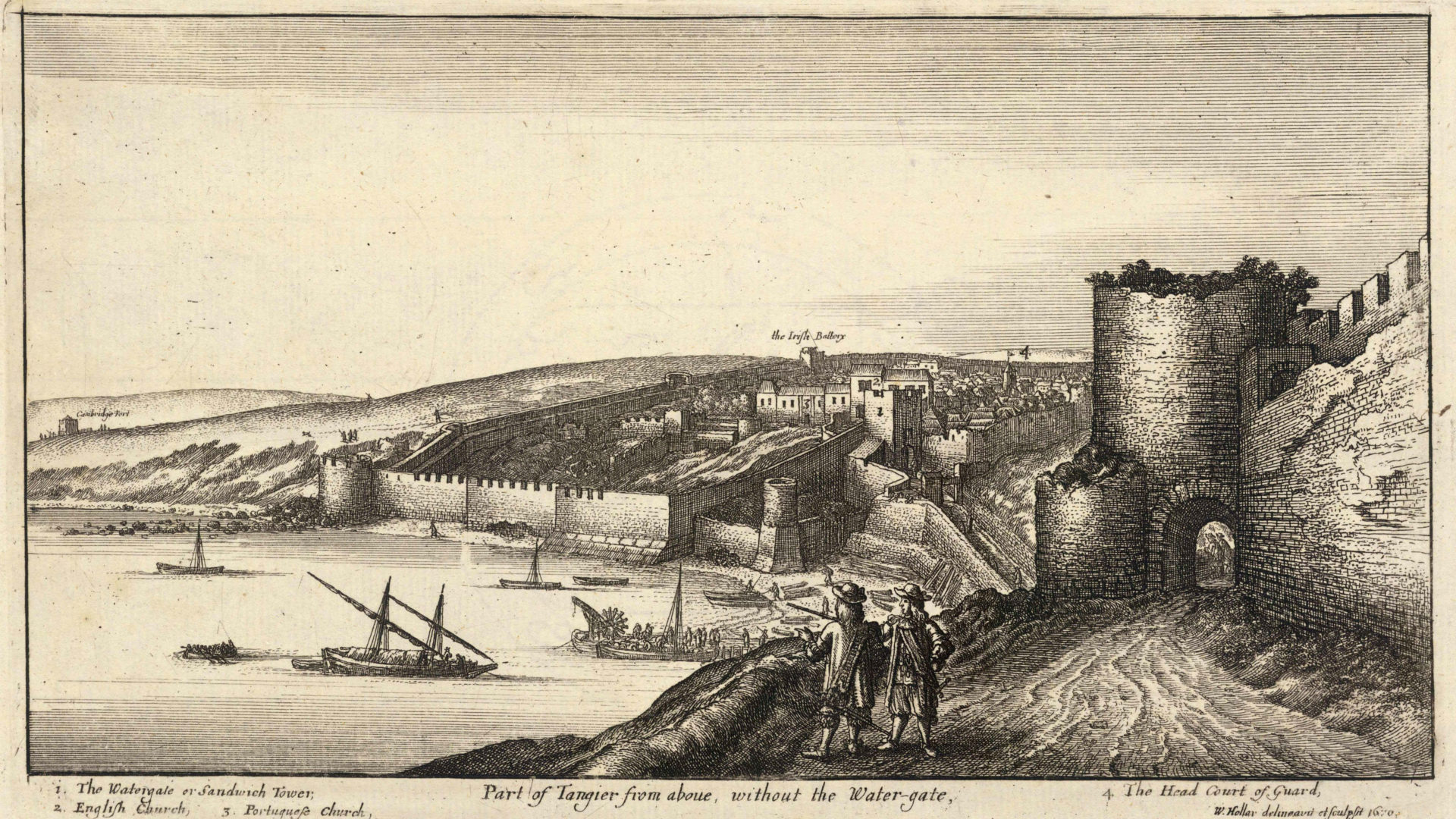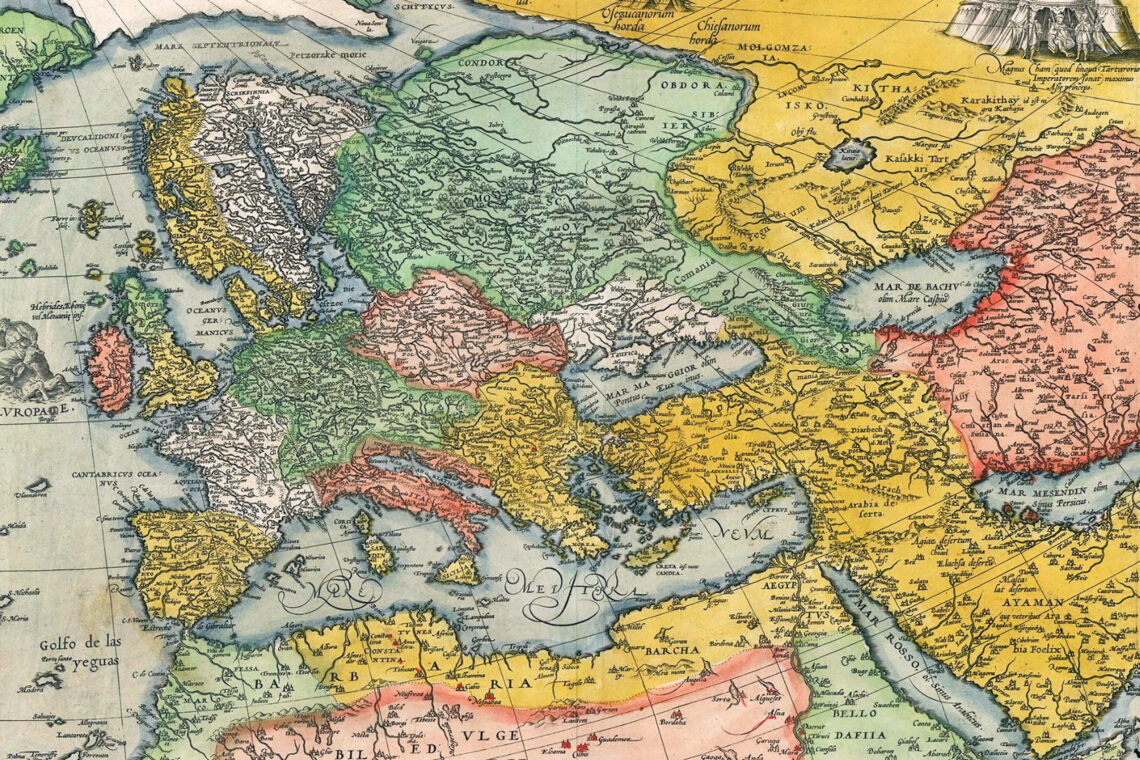In my book Freedom and Orthodoxy I make it clear that the classical world order was radically altered by Christopher Columbus’ voyage to the continent that would later bear the name of another European explorer, Amerigo (Americus in Latin) Vespucci.
1492, when the first voyage was undertaken, was, however, part of a process that had already started when the Portuguese, flexing their muscles, occupied the Moroccan town of Ceuta in 1417 and launched attacks on Tangier. These attacks were, at first, defeated, inflicting a serious blow to Portugal that reverberated around the world. But in time, the revengeful Portuguese returned and finally succeeded in occupying Tangier. As was their habit along the Moroccan and African coasts, the Portuguese enclosed themselves in fortified enclaves, looked seaward, and turned their backs to the Moroccan hinterland. It was not a sustainable way of life since they were, in essence, self-quarantined and made themselves easy targets for siege operations and ambushes outside their fortified walls.
The Portuguese lasted for almost two centuries before they gave their small settlement to England as a gift. As A. J. Smithers notes in his detailed study The Tangier Campaign: The Birth of the British Army (2003), when King Charles II married the Portuguese Princess Catherine de Braganza on May 21, 1661, the dowry, negotiated beforehand, included “half a million pounds sterling,” “free trade with Brazil and the Portuguese East Indies,” unvalued real estate, the island of Bombay, and “the possession of Tangier, a place likely to be of great benefit and security to the trade of England.” It is not for no reason that King Charles established Tangier as a free trade city as soon as the colony was settled in 1662.
This turned out to be an impossible dream. Almost a peninsula ringed by hills and two oceans, regularly hammered by strong easterly winds (Levanter), Tangier jutted out of an empire long in decline and given to ruinous power struggles. The rich land that had been the granary of Rome, as the American traveler Stephen Bonsal noted more than two centuries later, had fallen into desuetude by the “fanaticism and the folly of its present rulers.”
King Charles’ “Our City of Tangier” was practically a garrison town, home to the Tangier Regiment, whose troops equaled or exceeded the number of civilians in town. At its peak, Tangier’s population ranged from some 600 to more than 2000 inhabitants, including Portuguese, Spaniards, French, Dutch, Italians, and Jews, until the latter were accused of spying and expelled in 1677. Some 80 slaves, mostly captured Moors and Turks, added to the labor. Only a handful of free Moroccans lived within city walls.
Moroccans were constantly on the lookout, setting up ambushes whenever they could. This state of “low-intensity warfare” didn’t prevent the British from undertaking the construction of a stone pier, or “mole,” that would be considered “one of the greatest engineering works of the period,” according to E. M. G. Routh in his 1911 essay “The English at Tangier.” Sir Hugh Cholmley, an experienced pier builder, was assigned the challenging task. He studied the mole at the Italian city of Genoa and went to work with, at first, 40 workers, but that number quickly grew to 200. By the time the project was finished, some 167,251 tons of stone were used to build a harbor that extended a quarter of a mile (close to 500 meters) into the sea and rose some 18 feet (more than five meters) above low water.
Tangier remained an outpost, however, not a priority for the British Crown. Pay for the troops was, on average, a year in arrears and provisions were often short and not of the best quality. But the troops of the Tangier Regiment soldiered on, building forts and pushing back their Moroccan foes at every turn.
To make life tolerable, Routh tells us, the British set up a “House of Pleasure,” called Whitehall, beyond city walls, “a place where the Ladies, the Officers, and the better sort of people do refresh and divert themselves with Wine, Fruits, and a very pretty Bowling-Base.” Another fort named after King Charles II was also a fashionable resort with a beautiful garden. Evenings were filled with cards, music, and dancing—sometimes visiting sailors with fiddles added to the fun. A play-house was set up in the military storehouse at York Castle for soldiers to act in plays such as The Earl of Essex, The Indian Emperor, or The Old Brother. A visiting Spanish troupe, including at least one actress, performed in the same play-house.
Bored but fun-loving soldiers and sailors are not the best ingredients for irreproachable behavior and do not make for upright citizens. In Tangier, “more men had been killed by brandy than by the Moors,” Percy Kirke, the last governor of the colony, once commented.
By 1680, the situation had grown dire for the Europeans. As the Turks were making their move on Vienna and rival powers were competing with Britain, the English king could do no more for the colony he inherited and ordered its evacuation. All inhabitants were to be removed and all buildings destroyed before they fell into the hands of Moroccans. The king had wasted time, energy, and money for nothing. The mole alone had cost well over 1,000,000 pounds sterling, not to mention the cost of keeping the troops and maintaining the city. In 1684, the English left Tangier and only a lamentation survived to express the emotions of the time:
Now alass ! Tangier, that cost so dear
In money, lives, and fortunes,
See how the States, the kinder Fates,
For thine own Fate importunes:
Had this been plotted by the Moors,
Alass, it were no matter,
But blown up thus by thy own Store,
Thou’d’st better swom in water.
The old Port Tangier, where for good cheer,
We never paid extortion,
Which whilst it stood was once thought good
To be a Monarch’s portion.
Whilst English hearts thy walls possest
They scorn’d e’re to surrender,
Now to the Foes is left, a Nest
For Serpents to engender.
Of how many Souls and large Punch bowls
Has this been the undoing!
How many tun of precious Coin
Lie buried in the Ruin?
Had this been done some years ago
Of Horsemeniand Postillions
‘Thad sav’d some thousand lives the blow
And sav’d beside some Millions!
This episode invites reflection on the workings of history. Leaving aside the Portuguese presence, for now, one can’t help but marvel at how the English project for a mole and free-trade zone is slowly becoming a reality during the reign of King Mohammed VI who is a direct descendant of Moulay Ismail, the sultan who eventually defeated the English in Tangier. The old site of the mole is now turning into a massive recreational port with a commercial center. A new fishing port is being completed directly below the crumbling tower of York Castle (photo above). A few miles east, the biggest cargo port of Africa is in the final stages of construction.
Also, without the occupation of Tangier, Moulay Ismail would not have sent a delegation with gifts to King Charles. As Walter Frewen Lord, author of The Lost Possessions of England (1896) notes, the head of that delegation, Caid Mohamed Ohadu (former governor of Tetouan whose mother was English) so impressed the English that he was inducted as an honorary fellow into the Royal Society. Not that it helped him any with his boss for overstaying his mission, but at least we now have a Moroccan in the annals of the Royal Society.
What of the marriage that made Tangier a British possession? As a born Catholic in the British royal court, Catherine de Braganza (credited with introducing the fork and orange marmalade and popularizing the habit of drinking tea to England) was treated warily by the king’s circle. She was fond of her native Portugal and never became fluent in English. She had three miscarriages and left no heirs, but King Charles II had many children with mistresses. After her husband’s death, she returned to Portugal and died there in 1705. It is believed that her husband named the current borough of Queens in New York City after her in 1683, which is why, 300 years after the borough was established, a Portuguese-American organization called Friends of Queen Catherine raised almost $3 million to build a statue for her. But African-American activists, accusing the queen of benefiting from the slave trade, blocked the project. Only a smaller version of that statue has survived and is now in Lisbon, Portugal.
Some of the men who served in Tangier ended up in the Province of New York while others, like the ensign Roger Elliott, would eventually be appointed the first governor of Britain’s new colony, Gibraltar (occupied in 1704). Today, British Gibraltar stands facing the two Spanish enclaves of Ceuta and Melilla on the Moroccan coast and no one knows for sure how long all three cities will maintain their status.
In the meantime, more Europeans and people from around the world are choosing to make Tangier their home. As the city expands through industry and its cultural life grows richer and more diverse, it may well evolve into the free-trade zone King Charles imagined for it in the 17th century. Or maybe a free-trade outpost is no longer the requirement it used to be to stimulate economic activity.
In any case, the age of lamentations is gone. Tangier is rising and is, quite possibly, poised to enter its best age ever.





All Comments (1)
Comments are moderated by the editor and may not appear on this discussion until they have been reviewed and deemed appropriate for posting. All information collected is handled in a manner consistent with our privacy policy.